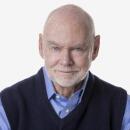Which Came First: the $$$$$ or the Candidate?
- Share via
SACRAMENTO — It’s a version of the old Catch-22 syndrome. Also the chicken-or-egg puzzle. Whatever, says a campaign consultant, “it’s a vicious and destructive cycle.”
“Very destructive” adds the consultant, Darry Sragow. “Destructive of the democratic process.”
More particularly, it can be destructive of wanna-be governors, such as Sragow’s current client, Insurance Commissioner John Garamendi. It can destroy candidacies for any major office.
It’s the age-old dilemma: You can’t be elected without spending a lot of money. And you can’t get the money unless investors think you have a chance to win. And you can’t look like a potential winner unless you spend money--on TV advertising to drive up poll numbers to impress venture capitalists, a.k.a. contributors. And around and around.
“It’s like you can’t get an acting job unless you have experience, but you can’t get experience unless you get an acting job,” notes Sragow.
There are exceptions, of course. The super-rich can spend their own money, such as Rep. Michael Huffington (R-Santa Barbara) now is doing in the U.S. Senate race. A powerful incumbent, such as Gov. Pete Wilson, can attract money merely by being in a position to reward or punish.
But most challengers--and even incumbents seeking to discourage challenges--must compete in the “vicious” cycle. And the competition gets especially vicious and crucial about this time in every campaign season.
*
Candidates know that the state’s influential independent polls--including The Times Poll and the Field Poll--sometime soon, within weeks, will be calling registered voters to ask who they favor. It’s as predictable as geese flying north in spring.
Favorable numbers will encourage investors; unfavorable numbers will discourage them. “Polls at this stage of the game really affect contributions,” says another campaign adviser, speaking anonymously.
So candidates scrape together the bucks to buy the ads to boost the numbers to attract the bucks.
There was a classic example of this four years ago by Dianne Feinstein, then an underdog candidate for the Democratic gubernatorial nomination. Feinstein had been written off. A former campaign manager had accused her of lacking spunk and energy. A December poll by The Times had found her trailing then-Atty. Gen. John K. Van de Kamp by 10 points. She couldn’t raise money.
“She decided to roll the dice,” recalls Sragow, then an adviser. “She dug into her own pocket to buy TV time and run a truly dramatic ad.” It became known as “the grabber,” one of the most successful political commercials ever.
Feinstein’s million-dollar ad--the first by any of the 1990 gubernatorial candidates--emphasized her leadership as mayor of San Francisco after succeeding the assassinated George Moscone. She’d been “forged in tragedy,” viewers were told. They also heard that she’d always supported abortion rights and favored the death penalty, in contrast to her opponent.
The ad ran in January and February and by March 1, The Times Poll found, Feinstein had leaped ahead of Van de Kamp by 19 points. “That enabled the campaign to raise substantial amounts of money,” Sragow says. “People began returning my calls and, more importantly, they began asking to meet Dianne.”
Feinstein won the nomination by an 11-point margin, then narrowly lost to Republican Wilson. In 1992, she was elected to the U.S. Senate in a near landslide.
*
There are many other examples.
In 1992, GOP Senate candidate Bruce Herschensohn trailed Democrat Barbara Boxer by 22 points in September, recalls his veteran strategist, Ken Khachigian. “We had to get our numbers up to remain viable and get contributions,” he says, adding that special interests “especially ask, ‘What do the polls look like?’ ”
Herschensohn went on TV with the fall’s first commercial, catching Boxer by surprise, halving her lead in polls and showing momentum to donors.
In the end, Boxer won by eight points.
It works the other way, too. Sixteen years ago, several weeks before the June primary, press secretary Larry Thomas handed then-San Diego Mayor Wilson a new Field poll showing that his gubernatorial candidacy was stalled back in the pack.
“At that point, Pete realized he wasn’t going to win and he just wanted to finish gracefully,” Thomas says. “But the momentum was gone. We couldn’t raise any money. We had to cut back staff substantially. Reporters stopped following us.”
This year, with no primary opposition, Wilson for awhile can hoard his money and enjoy watching Democrats play the vicious chicken-and-egg game.
More to Read
Inside the business of entertainment
The Wide Shot brings you news, analysis and insights on everything from streaming wars to production — and what it all means for the future.
You may occasionally receive promotional content from the Los Angeles Times.











